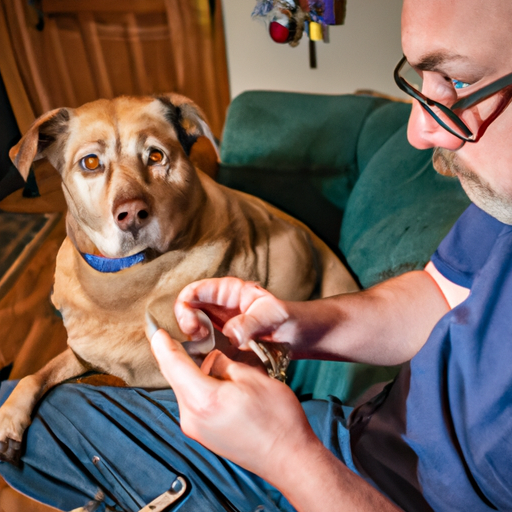Understanding Your Dog’s Anxiety
Your dog’s reluctance to have its nails trimmed is often rooted in fear or discomfort. Imagine yourself in a similar scenario where you are unsure of what’s happening. It can be quite unsettling, right? Similarly, your dog might associate nail cutting with past traumatic experiences or discomfort.
- Past trauma: Dogs remember when they’ve been hurt. A previous nail trim that clipped the quick and caused bleeding can make a dog apprehensive and uncooperative.
- Discomfort: The sensation of having their nails cut can be uncomfortable for some dogs.
Preparing for the Nail Trimming Session
Before you begin the nail trimming session, make sure you have all the necessary tools and aids at your disposal. Here are some things you might need:
- Dog nail clippers: Make sure you choose a good quality pair that is sharp and designed for the size of your dog.
- Styptic powder: This is used to stop the bleeding if you accidentally cut into the quick.
- Treats: These can be used as a positive reinforcement during and after the procedure.
The Proper Nail Trimming Technique
Learning the proper technique to trim your dog’s nails can go a long way in making the procedure more comfortable for both you and your dog.
- Identify the quick: The quick is the sensitive part of the dog’s nail that should not be cut. It’s easier to see in light-colored nails as a pink area. In dark-colored nails, you can look for a change in the texture of the nail.
- Clip the nail: Hold your dog’s paw firmly but gently and clip the nail below the quick at a 45-degree angle.
- Give treats: After each successful nail clip, reward your dog with a treat.
Dealing with an Uncooperative Dog
Dealing with an uncooperative dog can be challenging. Don’t lose hope, though. Here are some strategies you can try:
- Desensitize your dog: Start by touching your dog’s paws without clipping the nails. Reward them with treats to create positive associations.
- Take it slow: Don’t try to clip all the nails at once. Start with one or two and gradually progress.
- Get help: If your dog is too uncooperative, consider getting professional help.
Aftercare and Regular Maintenance
After successfully trimming your dog’s nails, make sure to give them lots of praise and perhaps an extra treat.
Regular maintenance is vital to ensure your dog’s nails don’t grow too long. A good rule of thumb is to trim your dog’s nails every two to four weeks.
| Activity | Frequency |
|---|---|
| Nail Trimming | Every 2-4 weeks |
| Paw Check | Once a week |
FAQ
Q: What if I accidentally cut the quick?
A: Don’t panic. Apply some styptic powder to stop the bleeding and comfort your dog.
Q: My dog gets very anxious. What can I do?
A: Try desensitizing your dog to the nail clippers and touch their paws regularly. If this doesn’t work, consult with your vet.
Q: How often should I trim my dog’s nails?
A: Ideally, you should trim your dog’s nails every two to four weeks.
Remember, your patience and understanding are key to making nail trimming a less stressful experience for your dog. With time and practice, you and your dog will become more comfortable with the process.



